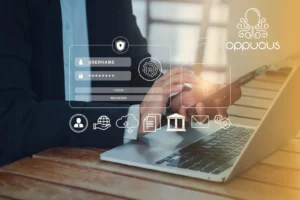If you’re a business owner who has ever bid on a government contract, you know that the process can be time-consuming and costly. From researching the bid to preparing the necessary documents, the costs of bidding on a government contract can add up quickly. That’s where the Employee Retention Credit (ERC) comes in.
What’s the Non-Refundable Portion of ERC?
The ERC was created as part of the Coronavirus Aid, Relief, and Economic Security (CARES) Act to help people maintain employment and receive payment. Under this program, employers eligible for tax credits can receive fully refundable credits if they keep their employees on the payroll.
The non-refundable portion is the employer’s share of the social security tax for the remaining quarter following the first share, after accounting for credits claimed on line 11a of Form 941. When completing line 16 of Form 941, Form 941-SS, or Schedule B, employers must account for the non-refundable portion of the credit. This usually applies to family leave and sick pay wages for the entire quarter and includes the employer’s share of Medicare tax and health plan expenses allocated to those wages.
In other words, ERC is a cost recovery service that helps businesses recoup the costs they incur while bidding on government contracts. As part of this service, ERC charges a non-refundable portion as a fee for its services.
How Does the Non-Refundable Portion of ERC Work?
The non-refundable portion is a fixed amount that is not returned to the client even if the bid is unsuccessful. This fee covers the service’s costs, including the time spent researching the proposal and preparing documents. The non-refundable portion is separate from success fees. Success fees are a percentage of the recovered costs and are only charged after the client has received the funds from the government contract.
It’s worth noting that the non-refundable portion is typically a small percentage of the total bid amount. This fee is clearly stated in the service agreement that clients sign before beginning the process with ERC. This ensures that clients are aware of the cost and can make an informed decision about whether or not to use the service.
What’s the Need for the Non-Refundable Portion of ERC?
The main reason is that it helps ERC cover its own costs. Providing a cost recovery service requires a significant investment of time and resources, and the non-refundable portion helps ensure that ERC can continue to offer this service to clients.
The potential benefits of ERC’s cost recovery service are also worth considering. By helping businesses recoup the costs of bidding on government contracts, ERC can make the process more financially viable for companies. This can be especially important for small businesses needing more resources to absorb the costs of bidding on a government contract.
If you’re interested in using Oppous’ Cost Recovery Partners to help recover the costs of bidding on government contracts, you can find more information and sign up for the service at the following link: https://bit.ly/3CqIMp3.
Using a cost recovery service like ERC can help your business save time and money while bidding on government contracts. The non-refundable portion is a small price to pay for the potential benefits of using the service.









